Discussion Leader: Bob Baker
Factors in developing initiatives for affordable housing- DMA discussion Thursday are:
1. Economics
2. Politics
3. Welfare
4. Efficiency
5. Legal Issues
6. Fairness
Darien
Application to the Heights in Darien:
http://theheightsdarien.com/apply/
National
HUD Rental Assistance:
https://www.hud.gov/topics/rental_assistance
National Affordable Housing:
https://nationalaffordablehousing.com/apply-section-8-housing-state/?utm_source=EE-1&utm_campaign=NationalAffordableHousing
Typical Percentages for Household Budgets – Budgeting Money
https://budgeting.thenest.com/typical-percentages-household-budgets-3299.html
Connecticut
Our own Evonne Klein is CT Commissioner of Housing:
http://www.ct.gov/doh/site/default.asp
Section 8-30g has been used in town to override local zoning rules to add affordable housing.
https://www.cga.ct.gov/2017/rpt/pdf/2017-R-0013.pdf
https://www.hud.gov/topics/rental_assistance/phprog
Section 8 Housing In Connecticut And HUD Low Income House Rentals
https://section-8-apartments.org/states/connecticut-state.html?utm_source=bing&utm_medium=cpc&utm_campaign=Search_CT_Geo_Section%208%20Apartments&utm_term=%2Bsection%20%2B8%20%2Bincome%20%2Blimits&utm_content=Income%20Limits%20-%20BM
NY Times Magazine, Jan 27, page 53
“New York is facing an affordable-housing crisis.”
“Of the roughly 2300 apartments in…the project, about 700 will be reserved for lower-income tenants. The first 105 affordable units were recently made available at monthly rents ranging from$590 to $964: 87,000 people entered the lottery for them.
NY Times Jan. 8. Business section. “Homeowners want a Say Past Their Lot Lines” [ zoning regulations raise home prices]
https://www.nytimes.com/2018/01/03/upshot/zoning-housing-property-rights-nimby-us.html?_r=0
Denver Has a Plan for Its Many Luxury Apartments: Housing Subsidies – WSJ
Affordable Housing Resources | Texas Health and Human Services
https://hhs.texas.gov/doing-business-hhs/provider-portals/resources/promoting-independence/affordable-housing-resources
This posting on “food stamps” in CT. is in contrast to how assistance for housing is administered.
http://portal.ct.gov/DSS/SNAP/Supplemental-Nutrition-Assistance-Program—SNAP/Eligibility
National Affordable Housing – Section 8 Help and Resources
https://nationalaffordablehousing.com/?utm_source=BB-Desktop-Spy&utm_campaign=NationalAffordableHousing&utm_medium=All&utm_content=Ad-1&utm_term=Text-1
How to Apply for Section 8 Housing in Connecticut
https://nationalaffordablehousing.com/apply-section-8-housing-state/how-to-apply-for-section-8-housing-in-connecticut/
Connecticut Section 8 Housing | Section-8-Housing.org
https://section-8-housing.org/Connecticut?utm_source=bing&utm_medium=cpc&utm_campaign=Search_CT_Kwd_Section%208&utm_term=section%208%20housing%20connecticut&utm_content=Housing%20-%20EX
Learn about Homeownership Vouchers (Section 8 Homeownership Vouchers)
https://nationalaffordablehousing.com/homeownership/
Web Notes – HUD.gov / U.S. Department of Housing and Urban Development (HUD)
https://www.hud.gov/topics/housing_choice_voucher_program_section_8
http://www.aei.org/publication/americas-affordable-housing-crisis-challenges-and-solutions/
http://theweek.com/articles/733689/how-fix-affordable-housing-crisis-big-governmentstyle
 Gary here. I just read this in preparation for our discussion. Gates and Obama have it on their suggested reading list. It is about people at the very bottom. Depressing – extremely difficult to find solutions.
Gary here. I just read this in preparation for our discussion. Gates and Obama have it on their suggested reading list. It is about people at the very bottom. Depressing – extremely difficult to find solutions.
From Harvard sociologist and MacArthur “genius” Matthew Desmond, a landmark work of scholarship and reportage that will forever change the way we look at poverty in America In this brilliant, heartbreaking book, Matthew Desmond takes us into the poorest neighborhoods of Milwaukee to tell the story of eight families on the edge. Arleen is a single mother trying to raise her two sons on the $20 a month she has left after paying for their rundown apartment. Scott is a gentle nurse consumed by a heroin addiction. Lamar, a man with no legs and a neighborhood full of boys to look after, tries to work his way out of debt. Vanetta participates in a botched stickup after her hours are cut. All are spending almost everything they have on rent, and all have fallen behind. The fates of these families are in the hands of two landlords: Sherrena Tarver, a former schoolteacher turned inner-city entrepreneur, and Tobin Charney, who runs one of the worst trailer parks in Milwaukee. They loathe some of their tenants and are fond of others, but as Sherrena puts it, “Love don’t pay the bills.” She moves to evict Arleen and her boys a few days before Christmas. Even in the most desolate areas of American cities, evictions used to be rare. But today, most poor renting families are spending more than half of their income on housing, and eviction has become ordinary, especially for single mothers. In vivid, intimate prose, Desmond provides a ground-level view of one of the most urgent issues facing America today. As we see families forced into shelters, squalid apartments, or more dangerous neighborhoods, we bear witness to the human cost of America’s vast inequality–and to people’s determination and intelligence in the face of hardship. Based on years of embedded fieldwork and painstakingly gathered data, this masterful book transforms our understanding of extreme poverty and economic exploitation while providing fresh ideas for solving a devastating, uniquely American problem. Its unforgettable scenes of hope and loss remind us of the centrality of home, without which nothing else is possible.

 Taylor Strubinger will lead a walking tour of New York City’s world-famous Christmas trees and department store windows,
Taylor Strubinger will lead a walking tour of New York City’s world-famous Christmas trees and department store windows,  J.H. “Billy” Williams always had an affinity for animals. So, when he responded to job offer with the East India Company to work with logging elephants his family wasn’t surprised, though worried that he had already come back from World War I in one piece, would he be so lucky with India? Not only did he find his calling with the elephants in India, Billy and his elephants became war heroes. At the onset of World War II, Williams formed Elephant Company and was instrumental in defeating the Japanese in Burma and saving refugees, including on his own “Hannibal Trek.” Billy Williams became a media sensation during the war, telling reporters that the elephants did more for him than he was ever able to do for them, but his story has since been forgotten. Part biography, part war story, and part wildlife adventure, Croke delivers an utterly charming narrative and an important, little-known piece of the legacy of World War II.
J.H. “Billy” Williams always had an affinity for animals. So, when he responded to job offer with the East India Company to work with logging elephants his family wasn’t surprised, though worried that he had already come back from World War I in one piece, would he be so lucky with India? Not only did he find his calling with the elephants in India, Billy and his elephants became war heroes. At the onset of World War II, Williams formed Elephant Company and was instrumental in defeating the Japanese in Burma and saving refugees, including on his own “Hannibal Trek.” Billy Williams became a media sensation during the war, telling reporters that the elephants did more for him than he was ever able to do for them, but his story has since been forgotten. Part biography, part war story, and part wildlife adventure, Croke delivers an utterly charming narrative and an important, little-known piece of the legacy of World War II.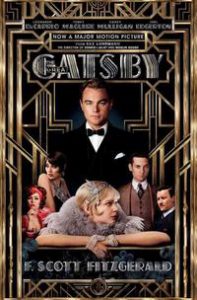 The mysterious Jay Gatsby uses his fabulous wealth to create an enchanted world fit for his former love, Daisy Buchanan, now married to Tom. Daisy, though, is a romanticised figment of his own imagination, and the extraordinary world that he creates is equally illusory. He gives lavish, legendary parties where the guests and gate-crashers enjoy free-flowing champagne and cocktails and carefree hospitality. But a more sinister reality begins to break through, as idealized romantic figures prove to have human frailties and selfish motivations, and the grandiose world of Gatsby’s creation crumbles and disillusion turns to tragedy.
The mysterious Jay Gatsby uses his fabulous wealth to create an enchanted world fit for his former love, Daisy Buchanan, now married to Tom. Daisy, though, is a romanticised figment of his own imagination, and the extraordinary world that he creates is equally illusory. He gives lavish, legendary parties where the guests and gate-crashers enjoy free-flowing champagne and cocktails and carefree hospitality. But a more sinister reality begins to break through, as idealized romantic figures prove to have human frailties and selfish motivations, and the grandiose world of Gatsby’s creation crumbles and disillusion turns to tragedy.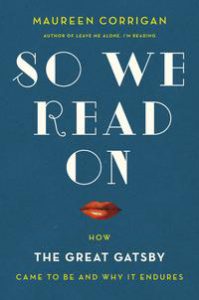
 Soon to be a major motion picture starring Chris Hemsworth, Cillian Murphy, Ben Wishaw, and Brendan Gleeson, and directed by Ron Howard.The ordeal of the whaleship Essex was an event as mythic in the nineteenth century as the sinking of the Titanic was in the twentieth. In 1819, the Essex left Nantucket for the South Pacific with twenty crew members aboard. In the middle of the South Pacific the ship was rammed and sunk by an angry sperm whale. The crew drifted for more than ninety days in three tiny whaleboats, succumbing to weather, hunger, disease, and ultimately turning to drastic measures in the fight for survival. Nathaniel Philbrick uses little-known documents-including a long-lost account written by the ship’s cabin boy-and penetrating details about whaling and the Nantucket community to reveal the chilling events surrounding this epic maritime disaster. An intense and mesmerizing listen, In the Heart of the Sea is a monumental work of history forever placing the Essex tragedy in the American historical canon.
Soon to be a major motion picture starring Chris Hemsworth, Cillian Murphy, Ben Wishaw, and Brendan Gleeson, and directed by Ron Howard.The ordeal of the whaleship Essex was an event as mythic in the nineteenth century as the sinking of the Titanic was in the twentieth. In 1819, the Essex left Nantucket for the South Pacific with twenty crew members aboard. In the middle of the South Pacific the ship was rammed and sunk by an angry sperm whale. The crew drifted for more than ninety days in three tiny whaleboats, succumbing to weather, hunger, disease, and ultimately turning to drastic measures in the fight for survival. Nathaniel Philbrick uses little-known documents-including a long-lost account written by the ship’s cabin boy-and penetrating details about whaling and the Nantucket community to reveal the chilling events surrounding this epic maritime disaster. An intense and mesmerizing listen, In the Heart of the Sea is a monumental work of history forever placing the Essex tragedy in the American historical canon.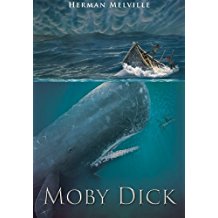 Side read: Moby Dick
Side read: Moby Dick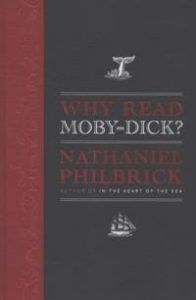
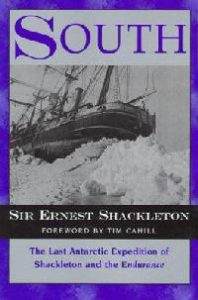 This is one of the most perilous adventure tales ever. Unbelievable – but true. I understand that business schools use it to teach crisis management. Gary
This is one of the most perilous adventure tales ever. Unbelievable – but true. I understand that business schools use it to teach crisis management. Gary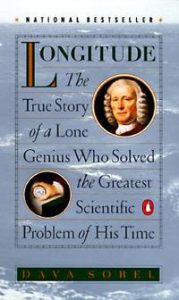 The Essex sailors knew their Latitude but not their Longitude. This is a short, interesting book on the subject. Anyone alive in the eighteenth century would have known that “the longitude problem” was the thorniest scientific dilemma of the day-and had been for centuries. Lacking the ability to measure their longitude, sailors throughout the great ages of exploration had been literally lost at sea as soon as they lost sight of land. Thousands of lives and the increasing fortunes of nations hung on a resolution. One man, John Harrison, in complete opposition to the scientific community, dared to imagine a mechanical solution-a clock that would keep precise time at sea, something no clock had ever been able to do on land. Longitude is the dramatic human story of an epic scientific quest and of Harrison’s forty-year obsession with building his perfect timekeeper, known today as the chronometer. Full of heroism and chicanery, it is also a fascinating brief history of astronomy, navigation, and clockmaking, and opens a new window on our world.
The Essex sailors knew their Latitude but not their Longitude. This is a short, interesting book on the subject. Anyone alive in the eighteenth century would have known that “the longitude problem” was the thorniest scientific dilemma of the day-and had been for centuries. Lacking the ability to measure their longitude, sailors throughout the great ages of exploration had been literally lost at sea as soon as they lost sight of land. Thousands of lives and the increasing fortunes of nations hung on a resolution. One man, John Harrison, in complete opposition to the scientific community, dared to imagine a mechanical solution-a clock that would keep precise time at sea, something no clock had ever been able to do on land. Longitude is the dramatic human story of an epic scientific quest and of Harrison’s forty-year obsession with building his perfect timekeeper, known today as the chronometer. Full of heroism and chicanery, it is also a fascinating brief history of astronomy, navigation, and clockmaking, and opens a new window on our world. A revolutionary new appraisal of the Old West and the America it made
A revolutionary new appraisal of the Old West and the America it made
 We will be walking Greenwich Point Park on Friday December 8 at 10.30 am. Note that this is half an hour later than our usual start time of 10.00 am.
We will be walking Greenwich Point Park on Friday December 8 at 10.30 am. Note that this is half an hour later than our usual start time of 10.00 am. We will be hiking at Saxon Woods Park in Scarsdale, NY on Friday Nov 17 at 10 am. This is a 700 acre county park and contains an 18 hole golf course, tennis courts, a huge swimming pool, soccer fields and several miles of hiking trails in the woods. We will be hiking the part of the
We will be hiking at Saxon Woods Park in Scarsdale, NY on Friday Nov 17 at 10 am. This is a 700 acre county park and contains an 18 hole golf course, tennis courts, a huge swimming pool, soccer fields and several miles of hiking trails in the woods. We will be hiking the part of the Taylor Strubinger reports that the Happy Wanderers will explore Central Park on Tuesday, October 17, 2017.
Taylor Strubinger reports that the Happy Wanderers will explore Central Park on Tuesday, October 17, 2017.
 The hike will last about 2-2 ½ hours and will give us ample opportunity to bathe in the forest air. I mention this because the Japanese believe hiking is good for one’s health, not just because of the exercise involved, but also because it gives one the opportunity to breathe the forest air which is swirling with healthful compounds released by the trees.
The hike will last about 2-2 ½ hours and will give us ample opportunity to bathe in the forest air. I mention this because the Japanese believe hiking is good for one’s health, not just because of the exercise involved, but also because it gives one the opportunity to breathe the forest air which is swirling with healthful compounds released by the trees.